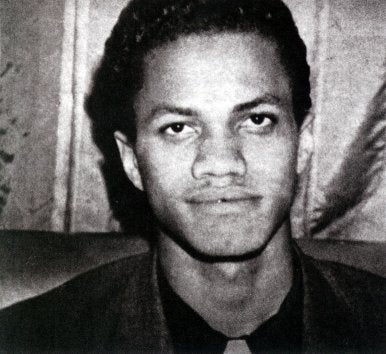A childhood marked by injustice

Throughout the beginning of the 20th Century, and even before then, it was not easy to be black. The white people had used the black people as slaves for so long that they forgot they were human. The blacks were forced to be slaves, preparing tobacco fields, working in homes, and even caring for the children of the whites.
There was a major issue with segregation. Black children were not able to go to school with my children. White men and women were able to sit down on public buses, yet black people were forced to stand – or give their seat over to a white person. Racism bled throughout the streets. Not a single black person was treated equally.
Malcolm Little was born in 1925 and saw some of the harsh crimes being committed in white America against black Americans. He became known to the world as Malcolm X and became a human right activist – and one of the most influential men focused on African Americans in history.
Malcolm X did not have a positive early childhood. He was orphaned early in life because his father had been killed when he was six and his mother was in a mental hospital when he was 13. He spent the rest of his younger years in and out of foster homes.
A chosen path for a great black leader

At the age of 20, he was sent to prison for larceny as well as breaking and entering. This is when he became a member of the Nation of Islam. He was an American Muslim minister and decided that it was his duty to speak out against all of the injustice that was happening against the black people in the United States.
It was easy for him to choose this path. He constantly felt that the white man was suppressing him and those around him. In his autobiography, he identified his grandfather as a white rapist. By growing up seeing someone who should have been a role model as a rapist, and this person was white, it didn’t bode well for white society.
In 1957, Johnson Hinton was beaten by two police officers in New York City. He was a member of the Nation of Islam and was black. What was so surprising is that this was New York, not Alabama – and this is what they were shouting when several Nation of Islam members tried to intervene. They were trying to remind the police officers that New York City was in the north – and therefore never pro-slavery.
The New York City police officers didn’t care. They beat Hinton to the point of him suffering brain contusions and a subdural hemorrhage. The four African-American men that tried to stop them were arrested.
Malcolm X stood outside of the police station with a small group of Muslims and demanded that they see Hinton. The police denied Malcolm X’s request initially, and the crowd grew to 500. Only then was Malcolm X allowed to speak with Hinton. He then arranged for an ambulance to take the man to Harlem Hospital since the police station had not.

Malcolm X was kept under surveillance by the New York City Police Department following this incident because they said no man should have that much power. This is because he was able to control the entire crowd and have them leave the police station with a single hand gesture.
Malcolm X spoke out loud about issues throughout the late 1950s. Many of his comments were reported on television, radio, and in print. He was also formally invited to several of the African nation of visual functions during the United Nations General Assembly in 1960.
Malcolm X remained a huge supporter of the Nation of Islam until he broke with them in 1964. He held a number of beliefs that helped the black people find their role in the United States. His beliefs were that black people were the original people of the world and that they have more rights than white people. He believe that white people were doubles and the all Blacks were superior to all whites.
He felt that the demise of the white race was imminent based upon how the white people continue to treat those who were not the same color.
Malcolm X had white relatives, which he felt entitled him to be able to make decisions about race relations. Throughout his life, he was accused of being anti-Semitic and an extremist.
However, he was a significant force throughout the civil rights movement and even went as far as calling Martin Luther King, Jr a “chump” of the white establishment. His goal was to advocate against separation of the black people from the white people and felt that violence may be necessary in order for the black people to advance themselves, using any means necessary. He wanted African-Americans to return to Africa.
While all of this did not happen, it did have a significant impact on the United States. The black people learned that they did not need to become secondary citizens to white people. Many black people who were tired of waiting for freedom and justice felt that Malcolm X summed up their complaints better than the overall civil rights movement.
The United States has come a long way, and black people in general have made extreme headway. Even if a lot of injustices remain, we proved that we are able to stand side-by-side with white people and do everything that they are able to do, including becoming president of the free world.
Carry the legacy of the oustanding Malcolm X with our dedicated t-shirt collection!



